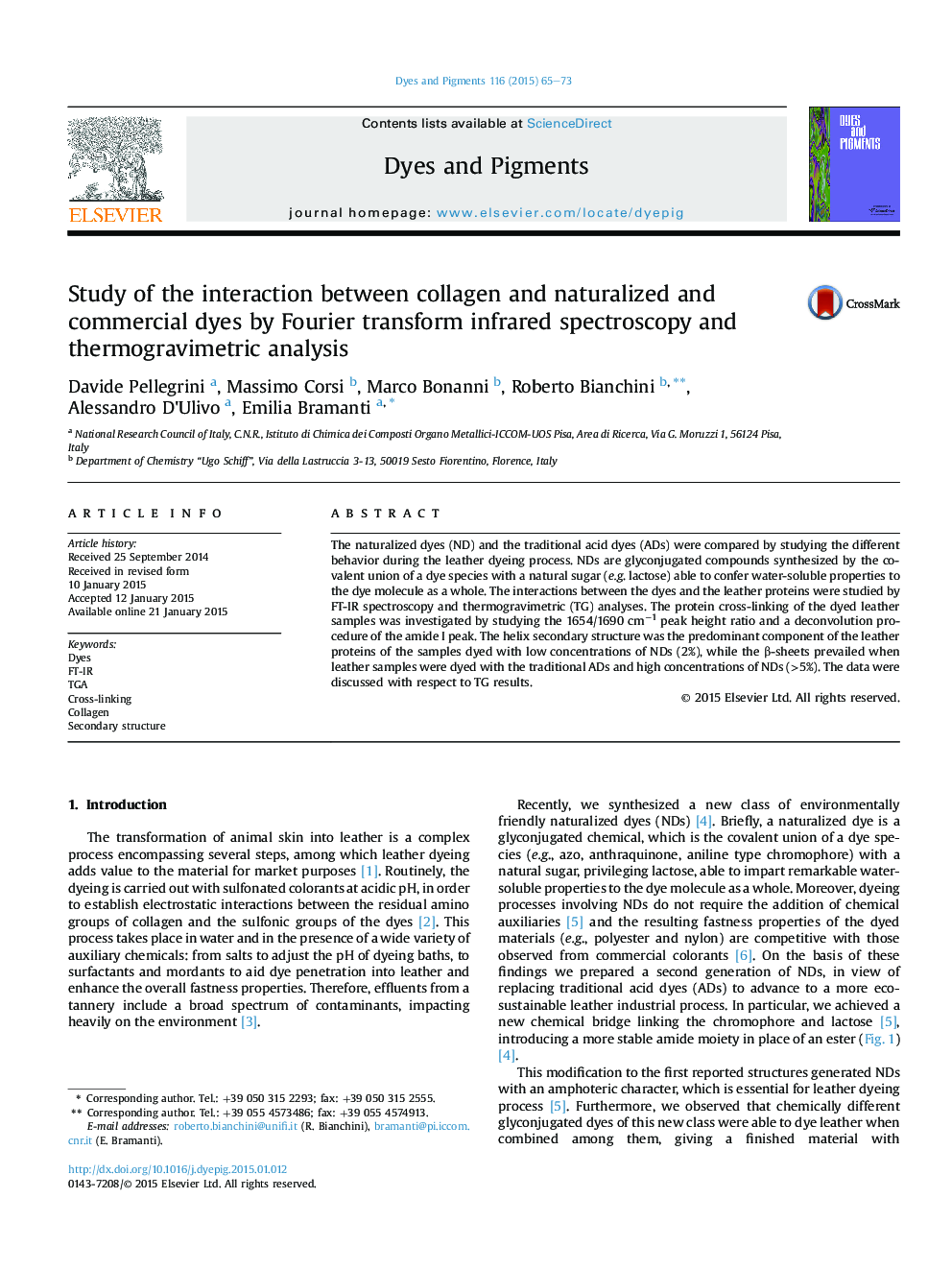| کد مقاله | کد نشریه | سال انتشار | مقاله انگلیسی | نسخه تمام متن |
|---|---|---|---|---|
| 175860 | 458924 | 2015 | 9 صفحه PDF | دانلود رایگان |
• Interaction of novel naturalized (NDs) and traditional commercial acid dyes (ADs) with collagen.
• FT-IR conformational analysis and thermogravimetric analysis.
• NDs give in collagen higher percentage of helices and a more cross-linked structure.
• Leather samples dyed with NDs had a higher thermal stability than samples dyed with ADs.
The naturalized dyes (ND) and the traditional acid dyes (ADs) were compared by studying the different behavior during the leather dyeing process. NDs are glyconjugated compounds synthesized by the covalent union of a dye species with a natural sugar (e.g. lactose) able to confer water-soluble properties to the dye molecule as a whole. The interactions between the dyes and the leather proteins were studied by FT-IR spectroscopy and thermogravimetric (TG) analyses. The protein cross-linking of the dyed leather samples was investigated by studying the 1654/1690 cm−1 peak height ratio and a deconvolution procedure of the amide I peak. The helix secondary structure was the predominant component of the leather proteins of the samples dyed with low concentrations of NDs (2%), while the β-sheets prevailed when leather samples were dyed with the traditional ADs and high concentrations of NDs (>5%). The data were discussed with respect to TG results.
Figure optionsDownload as PowerPoint slide
Journal: Dyes and Pigments - Volume 116, May 2015, Pages 65–73
